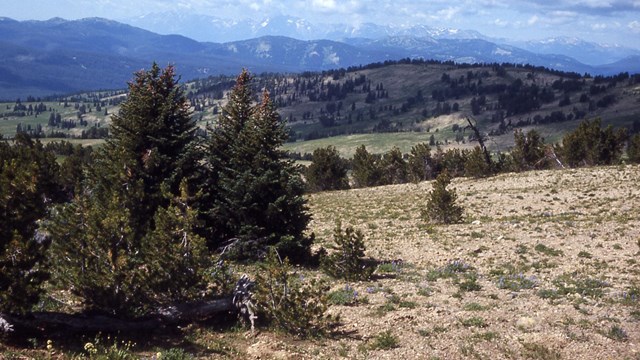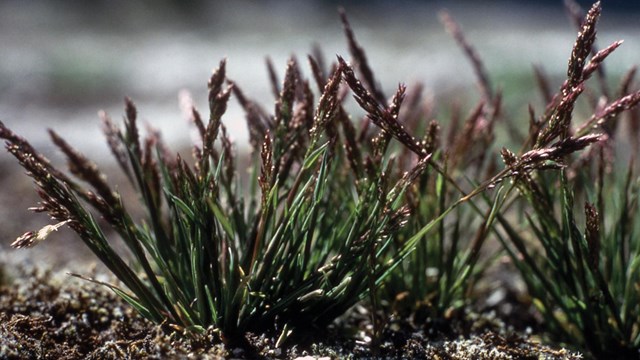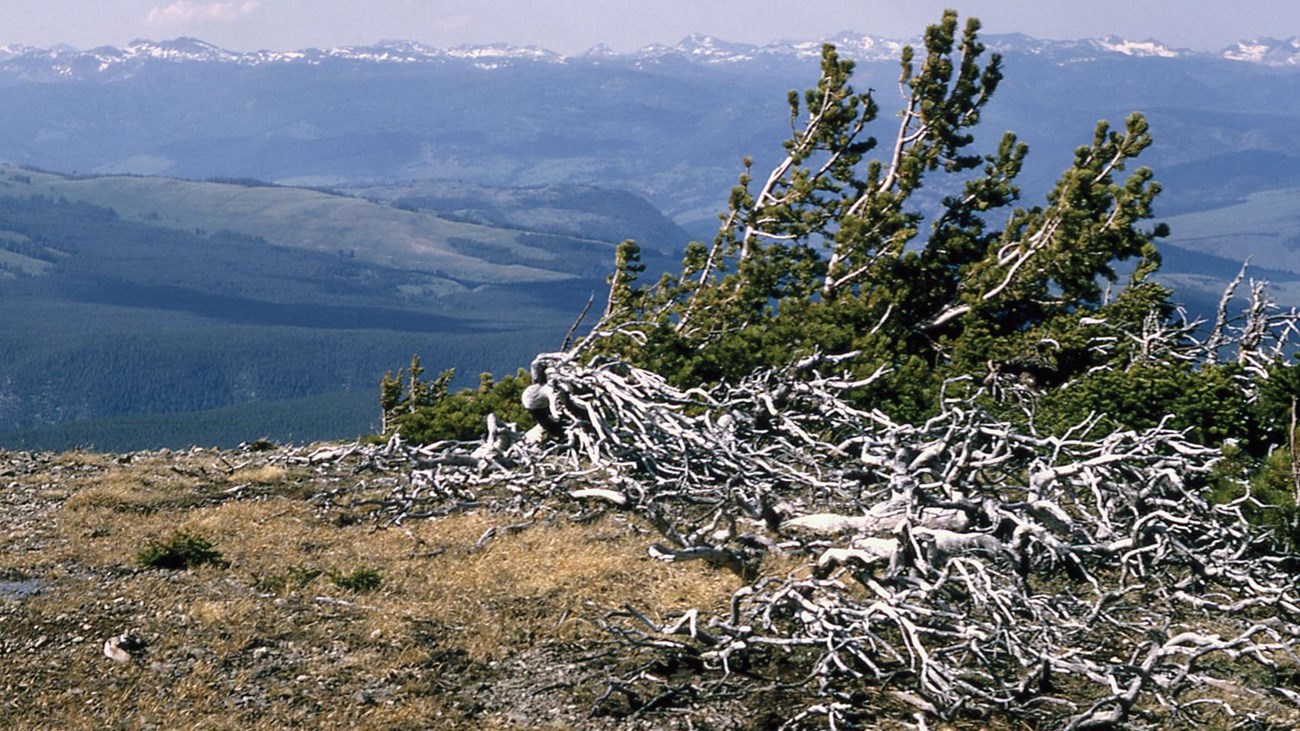
NPS Yellowstone sand verbena (Abronia ammophila) occurs along the shore of Yellowstone Lake. Taxonomists debate the relationship of this population of sand verbena to other sand verbenas. It may be distinct at the subspecific level, and is certainly reproductively isolated from the closest sand verbena populations in the Bighorn Basin of Wyoming east of the park. The presence of a sand verbena at 7,700 feet elevation in the northern Rockies is unexpected, as most members of this North American genus occur in the Southwest or along the Pacific Coast. One speculation by botanists is that the warmth provided by the geothermal activity in the area enabled a genus which had evolved in a warmer climate to gradually adapt to conditions in Yellowstone. Today, Yellowstone sand verbena tolerates the long, cold winters and uses the brief summer to bloom and reproduce. 
NPS/Jennifer Whipple DistributionThe entire occupied habitat of Yellowstone sand verbena plants is 1.48 acres. Herbarium specimens of Yellowstone sand verbena indicate that the species was previously more widely distributed along the lake shore. These early collections provide evidence that Yellowstone sand verbena has been extirpated at several sites (including near Fishing Bridge museum and the Lake Hotel) since 1900. In the last 30 years, an additional site has been extirpated, suggesting that as much as half of the population has been lost, probably due to trampling. In 1998 about 8,326 plants were documented along the lake shore. The previous two years had been very wet, resulting in a high level of recruitment with many young plants, some of which would probably not survive drier conditions. In 2010, the population was estimated at 3,600 plants. Life HistoryThe Yellowstone sand verbena grows close to the sand surface and rarely rises more than three inches from the surface of the sand. Some individuals occur near warm ground, so the thermal activity in Yellowstone may be helping this species survive. The flowers are white and the foliage is sticky, and bloom from mid-June until a killing frost. Although it was once thought that the species was an annual, it has a significant taproot that extends at least several feet deep into the sand in mature plants. Sand verbenas as a group are known to be sensitive to disturbance, suggesting that increased activity on the lake shore may have contributed to the species’ decline as the result of wildlife and humans walking across the area. An increase in visitor use of the area could lead to trampling, erosion, and the introduction of nonnative plants. Research has shown that the plants are capable of self-pollination as well as out-crossing using insect pollinators. Self pollination may sustain Yellowstone sand verbena in the absence of pollinators, but it may lead to inbreeding depression. Many types of insects visit the flowers, but pollination occurs primarily from moths and bumblebees. Insect visitation is sporadic and adversely impacted by precipitation and turbulent winds. Genetic exchange among the sites is unlikely due to the significant distance between them and the low numbers at three of the sites. The location of nearly all of the plants on the lake’s north shore places the species at risk of extinction due to random events affecting the population. Source: Data Store Collection 7870. To search for additional information, visit the Data Store. 
Vegetation & Resources Management Branch
Park employees inventory, monitor, manage, and research the vast array of plant communities in the park. 
Ross's Bentgrass
Ross’s bentgrass grows only in the geyser basins in the Firehole River drainage and at Shoshone Geyser Basin. 
Yellowstone Sulphur Flower
Yellowstone sulphur flower is only found in the Firehole River drainage. 
Plants
More than 1,300 plant taxa occur in Yellowstone National Park. |
Last updated: November 13, 2020
